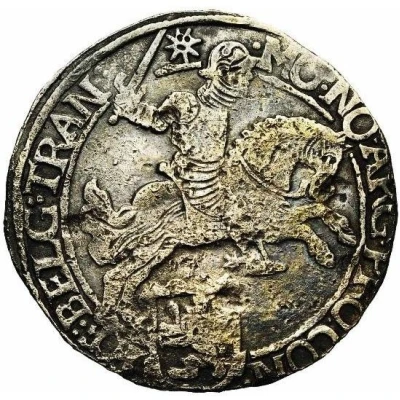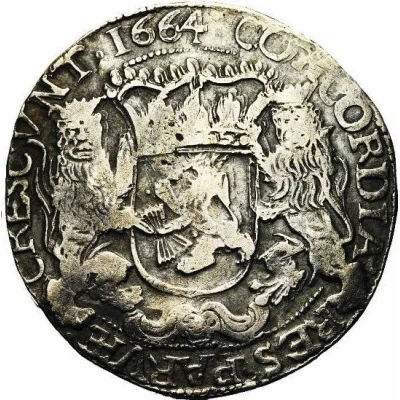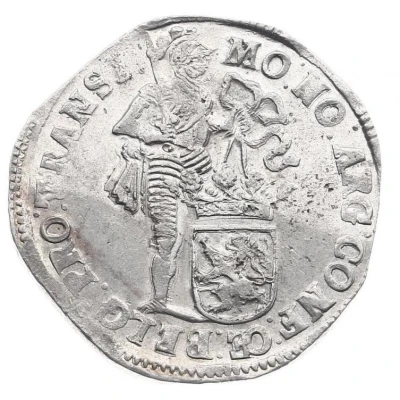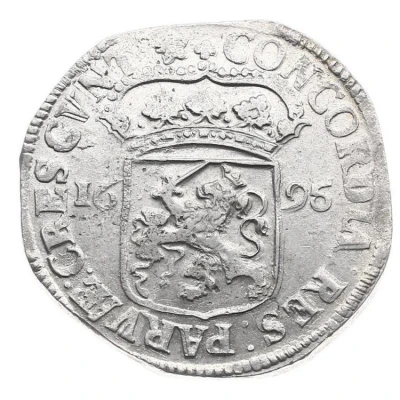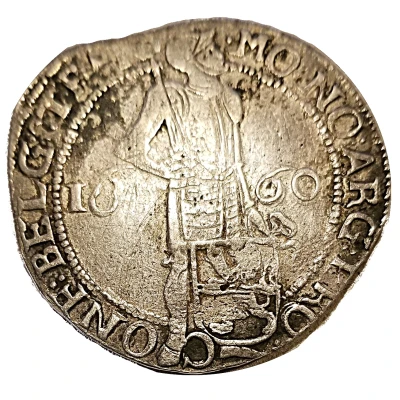
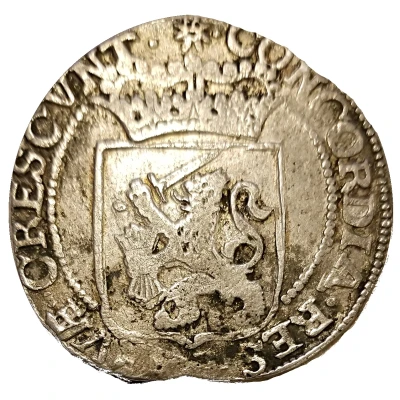

© Disha41754 (CC BY)
Silver Ducat Early type
| Silver (.873) | 28.25 g | - |
| Issuer | Province of Overijssel (Dutch Republic) |
|---|---|
| Type | Standard circulation coin |
| Years | 1659-1683 |
| Value | Silver Ducat (Rijksdaalder) |
| Currency | Gulden (1581-1795) |
| Composition | Silver (.873) |
| Weight | 28.25 g |
| Shape | Round (irregular) |
| Technique | Hammered |
| Orientation | Coin alignment ↑↓ |
| Demonetized | Yes |
| Updated | 2024-10-06 |
| Numista | N#135355 |
|---|---|
| Rarity index | 93% |
Reverse
Crowned shield with arms of the United Provinces, within inner circle. Mintmark begins legend
Script: Latin
Lettering: · CONCORDIA · RES · PARVAE · CRESCUNT ·
Translation: Unity makes strength
Comment
OVERIJSSELOverijssel was formerly known as Oversticht and also included most of the modern-day province of Drenthe. In 1336, it was made part of Guelders, though it was ceded to the Bishopric of Utrecht in 1347. The Bishops ceded the Oversticht to the Emperor Charles V in 1528, who styled himself Lord of Overijssel, after the Latin name of Oversticht that was known since 1233: Transysla or Transisalania, or Over-IJssel, i.e. the other side of the river IJssel. The people joined with the other Dutch and rebelled against Charles' heir Philip II. Overijssel became governed by the most powerful mayors and lords in the province.
https://en.wikipedia.org/wiki/Overijssel#Oversticht
First Stadtholderless Period
The First Stadtholderless Period or Era (1650–72; Dutch: Eerste Stadhouderloze Tijdperk) is the period in the history of the Dutch Republic in which the office of a Stadtholder was absent in five of the seven Dutch provinces (including Overijssel). It happened to coincide with the period when it reached the zenith of its economic, military and political Golden Age. https://en.wikipedia.org/wiki/First_Stadtholderless_Period
1660
...bribery played a big part in foreign relations also. A good example is the Dutch Gift the States General gave to Charles II of England in 1660 to get back in his good graces after the coolness of the mutual relations that reigned during Charles's years of exile in France. The bribe consisted of a number of precious paintings worth the not inconsiderable sum of 80,000 guilders, and the yacht HMY Mary, like the yacht on which he was comfortably transported home to England during the Restoration. The gift was mostly paid for by the Amsterdam vroedschap, who came to regret their unaccustomed generosity when Charles unfolded his anti-Dutch policy. Fortunately, most of the paintings were repatriated to the Netherlands by William III of England after he had become king, so the financial outlay had not been a complete waste.
Interesting fact
The Silver Ducat was a popular trade coin in the Dutch Republic during the 17th century, and it was widely used in international trade, particularly in the Baltic region. Its high silver content and consistent weight made it a reliable and valuable currency for merchants and traders. In fact, the Silver Ducat was so highly regarded that it was used as a standard unit of account for trade in the region, and its value was often used as a reference point for other currencies.
Price
| Date | Mintage | VG | F | VF | XF | AU | UNC |
|---|---|---|---|---|---|---|---|
| 1659 sun | 156397 | - | - | - | - | - | - |
Values in the table are based on evaluations by sales realized on Internet platforms. They serve as an indication only for Silver Ducat (Early type) 1659-1683 coin.
